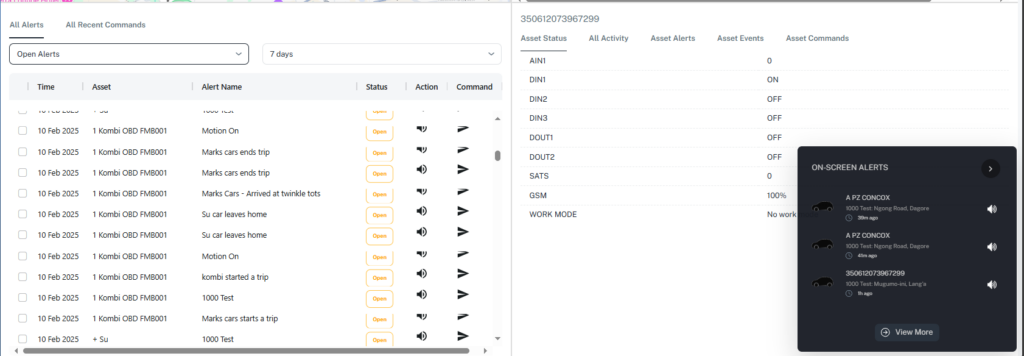Starting a GPS tracking business was the right call for you. Investing in GPS tracking software to manage your fleet is a game-changer that helps businesses to optimize routes, reduce fuel costs, and improve driver safety. However, many businesses fail to invest and partner with the right fleet management platform providers leaving valuable features on the table. At WhiteLabel Tracking, we encourage our partners to maximize their return on investment (ROI), by exploring and implementing our platform’s advanced capabilities.
In this guide, we’ll highlight five key underutilized features and how you can leverage them to enhance efficiency, improve driver performance, and reduce operational costs.
1. Eco-Driving Driver Scorecards: A Data-Driven Approach to Performance
Eco-driving driver scorecards provide insights into driver behavior, helping fleet managers identify risky driving habits such as harsh braking, rapid acceleration, and speeding. By analyzing this data, you can:
- Encourage safer driving habits through performance-based incentives.
- Reduce fuel consumption by minimizing aggressive driving.
- Lower maintenance costs by preventing excessive wear and tear on vehicles.

How to Utilize Driver Scorecards:
- Set benchmarks and reward top-performing drivers.
- Provide targeted training for drivers with poor scores.
- Integrate scorecards into your driver safety programs.
2. Live Alerts: Real-Time Visibility for Proactive Management
Live alerts enable fleet owners/managers to respond instantly to critical events such as unauthorized vehicle use, excessive idling, over speeding, tracker tampering and harsh driving. Instead of relying solely on periodic reports, live alerts provide immediate notifications, allowing you to:
- Reduce fuel wastage by addressing excessive idling.
- Enhance security by countering vehicle theft or preventing unauthorized vehicle use.
- Improve compliance with route adherence, road speed limits and delivery schedules.

How to Set Up Live Alerts:
- Customize alerts based on your operational needs (e.g., geofence breaches, speed limits).
- Assign alerts to specific managers for quicker response times.
- Use historical alert data to refine fleet policies and training programs.
3. Route Optimization: Cutting Costs with Smarter Navigation
Many businesses use GPS tracking for location monitoring but overlook route planning and optimization. Smart routing features analyze traffic patterns and suggest the most efficient paths, helping you:
- Reduce fuel expenses by avoiding congested routes.
- Improve on-time deliveries, boosting customer satisfaction.
- Minimize vehicle wear and tear with fewer unnecessary miles.
How to Implement Route Optimization:
- Use historical data to identify inefficiencies in current routes.
- Set up automated route planning for dispatch and delivery schedules.
- Monitor real-time traffic conditions to adjust routes dynamically.
4. Geofencing: Strengthening Security and Productivity
Geofencing allows you to create virtual boundaries around specific locations, triggering alerts when vehicles enter or exit these zones. This feature enhances both security and efficiency by:
- Preventing unauthorized vehicle use after hours.
- Ensuring drivers stick to assigned territories.
- Enhancing theft recovery efforts with real-time tracking.
How to Use Geofencing Effectively:
- Set up geofences around job sites, depots, and customer locations.
- Use alerts to verify vehicle arrivals and departures.
- Generate reports to analyze route adherence and unauthorized trips.
5. Automated Reports: Data-Driven Decision Making
Manually tracking fleet performance can be time-consuming. Scheduled reports simplify this process by compiling essential data, helping managers and business owners make informed decisions. These reports can provide insights into:
- Fuel consumption trends.
- Driver behavior analytics.
- Vehicle utilization efficiency.
How to Maximize Automated Reports:
- Schedule weekly or monthly reports for key performance indicators.
- Share reports with drivers and stakeholders to enhance accountability.
- Use data insights to implement cost-saving initiatives.
Conclusion
Your GPS tracking software is more than just a location monitoring tool—it’s a comprehensive fleet management solution we designed and continually develop to improve efficiency, reduce costs, and enhance safety. By leveraging underutilized features like driver scorecards, live alerts, and geofencing, you can maximize ROI and gain a competitive edge in the market.
Start exploring these advanced features today and transform the way you manage your fleet! Looking for expert guidance on how to optimize your GPS tracking system? Contact us today to learn more!